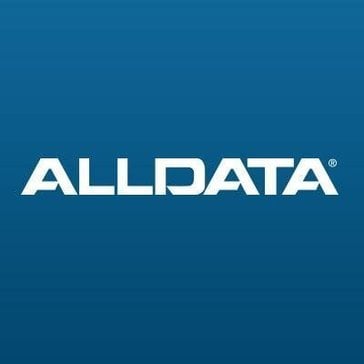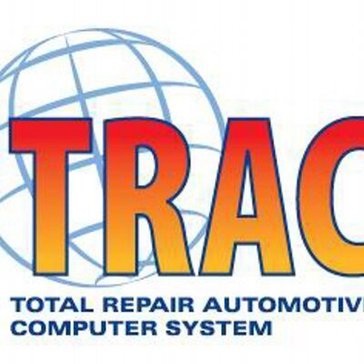Description

Orderry

RepairQ
Comprehensive Overview: Orderry vs RepairQ
Overview of Orderry and RepairQ
a) Primary Functions and Target Markets
Orderry:
-
Primary Functions:
- Orderry is a business management software designed to streamline operations for service industries, particularly in repair services. Its functionalities include managing work orders, inventory, customer relationship management (CRM), employees, and financials.
- The platform also offers analytic and reporting tools to monitor performance, track employee productivity, and assess financial health.
-
Target Markets:
- Orderry primarily targets small to medium-sized businesses (SMBs) in the repair services industry, including electronics, automotive, and appliance repair shops.
RepairQ:
-
Primary Functions:
- RepairQ is a point-of-sale (POS) and management software specifically tailored for repair service businesses. Its primary functions encompass processing sales transactions, tracking repairs, managing inventory, handling customer relationships, and generating detailed reports.
- It also provides specialized features like ticketing for repairs, warranty tracking, and integrations with third-party services for more comprehensive operation management.
-
Target Markets:
- RepairQ is aimed at repair shops, with a strong emphasis on serving electronics repair businesses, such as those specializing in mobile phones, computers, and consumer electronics.
b) Market Share and User Base
- Orderry:
- Orderry's market share primarily encompasses niche industries within the broader realm of service businesses, with a strong presence in Eastern Europe and certain parts of the United States. Its user base consists of small and medium-sized repair businesses looking for cost-effective and user-friendly solutions.
- RepairQ:
- RepairQ holds a significant market share in the United States, predominantly within the electronics repair sector. Its user base includes a mix of independent repair shops and franchises that benefit from RepairQ's robust POS and management features.
Overall, RepairQ is generally considered to have a more established presence in the electronics repair segment compared to Orderry, thanks to its specialized features and deeper market penetration in specific geographical areas.
c) Key Differentiating Factors
-
Industry Focus:
- While both solutions cater to repair industries, Orderry has a broader focus across different types of repair services, including automotive and appliance, while RepairQ is more specialized in electronics repair.
-
Feature Set:
- Orderry offers a comprehensive set of management tools that extend beyond typical repair shop needs, including employee management and broader financial analytics, which can be beneficial for businesses looking for an all-in-one management suite.
- RepairQ emphasizes POS functionality and integrates ticketing and warranty management features, which are critical for high-volume electronics repair shops.
-
Geographical Reach:
- Orderry has a stronger presence in European markets, while RepairQ dominates in North America, especially in the electronics sector.
-
User Interface and Experience:
- User feedback often highlights the intuitive interface of both Orderry and RepairQ, but RepairQ’s long-standing specialized focus sometimes translates to a more tailored user experience for electronics shops.
-
Pricing and Scalability:
- While both products offer scalable solutions, RepairQ often provides more customizability for larger operations or franchises due to its specialized modules and integrations. Orderry's pricing can be attractive for smaller SMBs and those looking for a more budget-conscious solution.
In conclusion, the choice between Orderry and RepairQ often depends on the specific industry focus and regional presence, with RepairQ being the preferred choice for electronics repairs in North America and Orderry serving a more diverse array of repair industries with a robust management platform.
Contact Info

Year founded :
Not Available
Not Available
Not Available
Not Available
Not Available

Year founded :
2012
+1 833-277-2677
Not Available
United States
http://www.linkedin.com/company/repairq-io
Feature Similarity Breakdown: Orderry, RepairQ
Orderry and RepairQ are both software solutions tailored for repair shops and service management. They offer a suite of features that streamline business operations, improve customer service, and enhance inventory management. Below is a breakdown of their similarities and differences:
a) Core Features in Common
-
Inventory Management: Both platforms provide robust inventory management capabilities, allowing users to track stock levels, manage parts and supplies, and automate reorder points.
-
Work Order Management: They offer tools to create, manage, and track work orders from start to completion, ensuring efficient workflow and customer communication.
-
Customer Management: Orderry and RepairQ both have CRM features that help maintain customer records, track history, and manage communications.
-
Point of Sale (POS): Each software includes POS functionalities that facilitate transactions, including the ability to handle various payment methods and integrate with hardware like credit card readers and receipt printers.
-
Reporting and Analytics: They offer reporting tools to gain insights into business performance, with customizable dashboards and reports that cover sales, inventory, and customer metrics.
-
Employee Management: These platforms provide features to manage staff schedules, roles, and permissions, helping streamline workforce management.
b) User Interface Comparison
-
Orderry: Known for its intuitive and user-friendly interface, Orderry offers a clean and straightforward design. The layout is designed to minimize clicks and streamline navigation through its modules, which is ideal for users who prefer a less cluttered workspace.
-
RepairQ: While also user-friendly, RepairQ's interface might come across as more detailed and feature-rich, which can be advantageous for users who need access to a wider array of information at once. It might require a bit more onboarding but offers depth of functionality for detailed operations.
c) Unique Features
-
Orderry:
- Revenue Monitoring: Orderry includes unique revenue tracking tools, helping businesses to measure profitability and identify growth opportunities more effectively.
- Customizable Workflows: This feature allows businesses to tailor the software to their specific processes, providing flexibility in how jobs move through the service pipeline.
-
RepairQ:
- Integrated Checkout & In-Store Experience: RepairQ emphasizes an integrated in-store experience with specialized features for checkout and seamless integration with peripheral hardware.
- Repair Ticketing with Detailed Logging: Offers a comprehensive approach to repair tickets, including detailed logs and extensive configuration options for ticket parameters. This is particularly beneficial for businesses that deal with complex repair cases requiring detailed documentation.
In conclusion, while both platforms share core functionalities tailored for repair management, Orderry leans toward a simplified, streamlined user experience, whereas RepairQ focuses on providing a comprehensive and deeply integrated solution catering to complex workflows. Users should choose based on whether they prioritize ease of use or the flexibility and depth of features.
Features

Sales Management
Financial Management
Inventory Management
Employee Management
Customer Management

Customer Relationship Management (CRM)
Point of Sale (POS)
Repair Management
Inventory Management
Best Fit Use Cases: Orderry, RepairQ
Orderry and RepairQ are software solutions designed to streamline operations for specific types of businesses, particularly those in the service and repair industries. Here’s a breakdown of the best fit use cases for each:
Orderry
a) Best Choice for Certain Types of Businesses or Projects:
- Service and Repair Shops: Orderry is ideal for businesses that manage repair and service orders. It offers tools to streamline operations such as tracking repairs, managing inventory, and customer relationship management.
- Small to Medium Enterprises (SMEs): It is particularly suited for small to medium-sized repair businesses due to its comprehensive features at a reasonable cost.
- Consumer Electronics: Businesses that repair consumer electronics, such as smartphones, computers, and appliances, will find Orderry’s features particularly beneficial for managing workflow and customer data.
- Automotive Repair: Although not exclusively an auto repair software, it is suitable for the automotive repair industry as well, especially for smaller shops that need comprehensive order and inventory management tools.
d) Catering to Different Industry Verticals or Company Sizes:
- Industry Vertical Reach: Orderry focuses on industries that require meticulous order and inventory management, customer handling, and business process automation.
- Company Size: Businesses ranging from small to medium-sized establishments can benefit from its features, which offer scalability without overwhelming small operations.
RepairQ
b) Preferred Option in Certain Scenarios:
- Point of Sale (POS) for Repair Shops: RepairQ excels in environments where robust POS functionalities are necessary alongside repair management, making it preferable for businesses with a strong retail component.
- Multi-store Operations: It is ideal for businesses with multiple locations due to its ability to unify operations across different stores efficiently.
- Franchises: RepairQ is often used by franchises in the service and repair industry because of its scalability and consistent operational functionalities.
- Specialized Repairs (e.g., Devices, Electronics): While not limited to electronic repairs, it’s particularly strong in scenarios where specialized device repair is needed, thanks to its ability to track detailed repair histories and parts inventories.
d) Catering to Different Industry Verticals or Company Sizes:
- Industry Vertical Reach: RepairQ targets repair businesses with a significant retail aspect, such as phone repair shops, and businesses needing sophisticated POS capabilities.
- Company Size: It caters to medium to large businesses and chains that require extensive data management, POS functionalities, and inventory control across multiple sites.
In summary, while both Orderry and RepairQ serve the service and repair industries, Orderry is usually better suited for smaller, single-location businesses focused on general repairs and service management. RepairQ, in contrast, is more suited for larger, multi-location, and retail-centric operations that require a strong POS system alongside their repair management capabilities.
Pricing

Pricing Not Available

Pricing Not Available
Metrics History
Metrics History
Comparing teamSize across companies
Conclusion & Final Verdict: Orderry vs RepairQ
To provide a conclusion and final verdict for Orderry and RepairQ, let's evaluate both products based on their value, pros and cons, and specific recommendations for potential users:
a) Best Overall Value
When assessing overall value, it's essential to consider factors such as pricing, features, user interface, customer support, and scalability.
-
Orderry may offer better value for small to mid-sized repair businesses that need a cost-effective and straightforward solution with essential features for inventory management, CRM, and reporting.
-
RepairQ could provide superior value for larger businesses or those dealing with high-volume transactions and more complex operations, owing to its robust feature set tailored specifically for retail repair businesses.
Ultimately, the best value depends on the business size and specific needs, with Orderry being ideal for smaller operations and RepairQ better suited for larger, more complex businesses.
b) Pros and Cons
Orderry:
Pros:
- Affordability: Generally more budget-friendly, making it accessible for small businesses.
- User-Friendly Interface: Intuitive design catering to users with limited technical expertise.
- Integrated Features: Offers a good range of essential tools for inventory management, CRM, and job tracking.
Cons:
- Limited Scalability: May not scale well for larger operations or complex business processes.
- Feature Set: Might lack some advanced features needed by larger enterprises.
RepairQ:
Pros:
- Comprehensive Features: Provides a wide range of functionalities tailored specifically for repair businesses.
- Scalability: Suitable for handling complex business operations, making it ideal for larger organizations.
- Integration Options: Offers integration with other software systems enhancing operational efficiency.
Cons:
- Price Point: Generally more expensive, which may be a barrier for smaller businesses.
- Learning Curve: Some features may require more time to learn and implement effectively.
c) Specific Recommendations
-
Identify Business Needs:
- Small businesses or startups primarily concerned with cost should consider strengthening their operations using Orderry for its affordability and ease of use.
- Larger businesses, or those planning to expand and need advanced features and scalability, should weigh investing in RepairQ for its comprehensive offerings.
-
Consider Future Growth:
- If you anticipate rapid growth or increasing complexity in operations, RepairQ may be the better investment long-term.
-
Try Before You Buy:
- Explore the trial versions of both platforms to get a hands-on understanding of how each meets your business needs.
-
Customer Support and Training:
- Evaluate the level of customer support and training offered by each platform, as this can be crucial for smooth operations, particularly during the transition period.
In conclusion, both Orderry and RepairQ possess strengths tailored to different business sizes and requirements. By aligning your specific needs with their offerings, you can select the product that delivers the best overall value for your repair business.
Add to compare
Add similar companies



